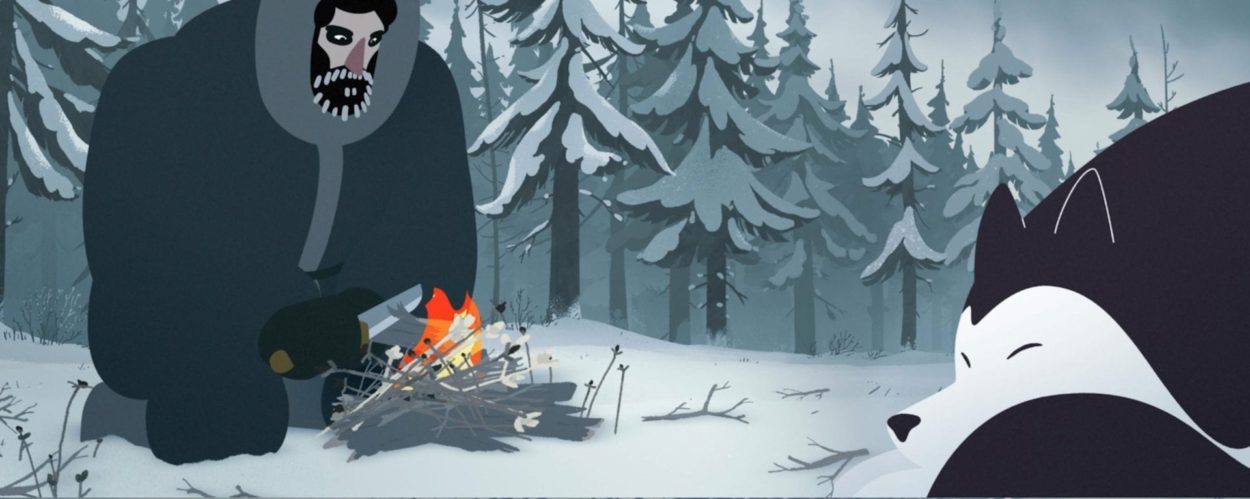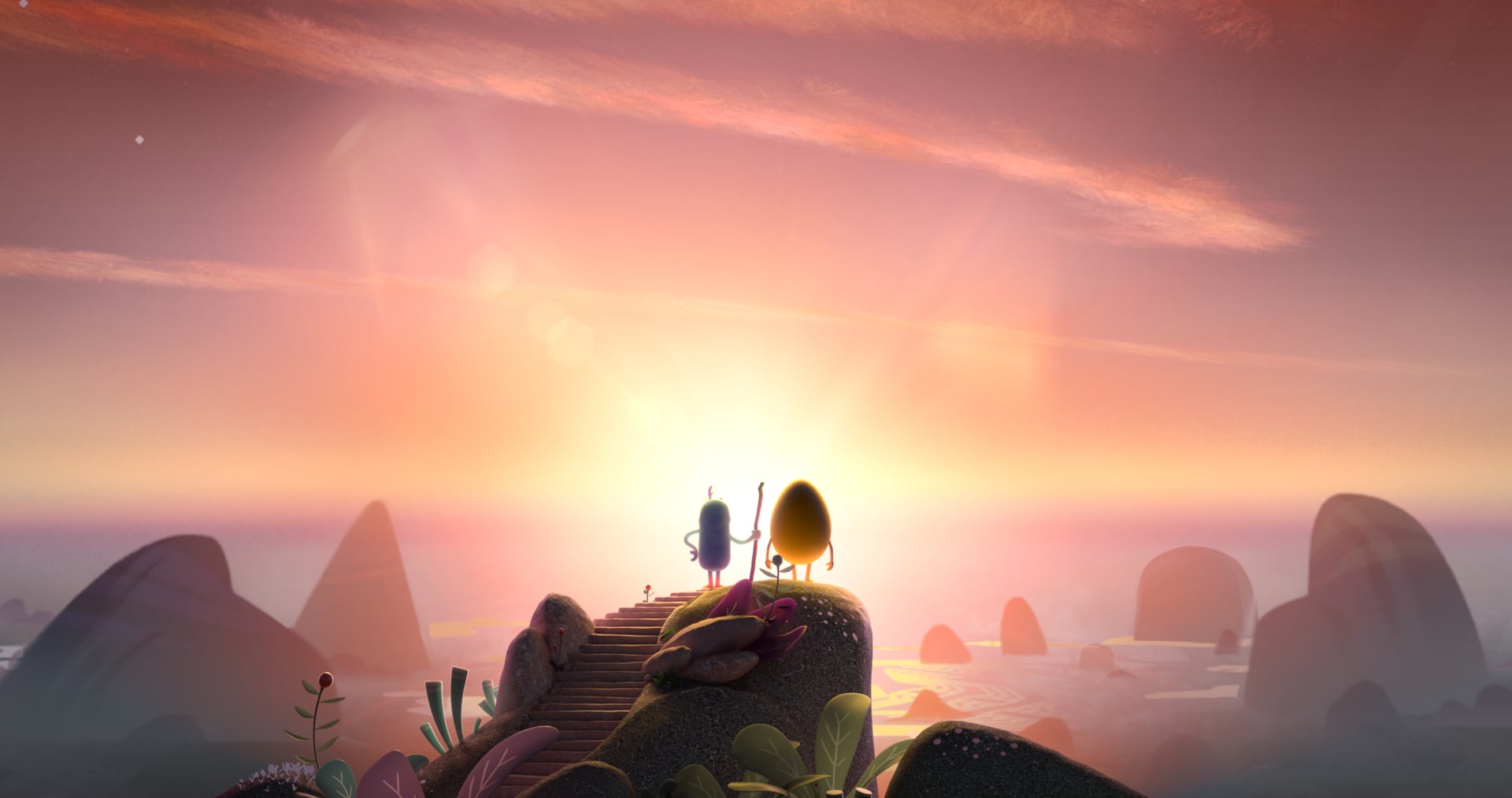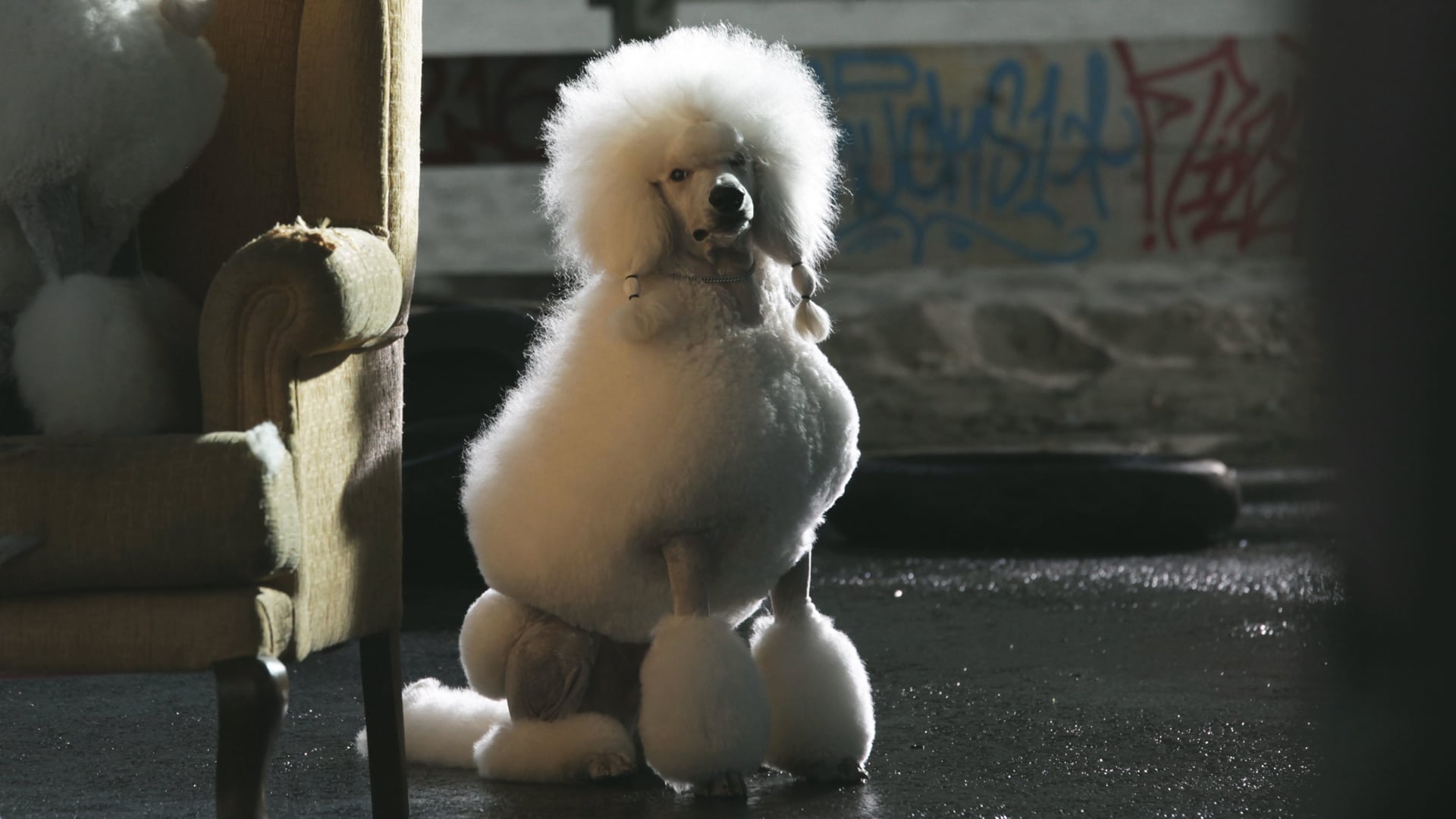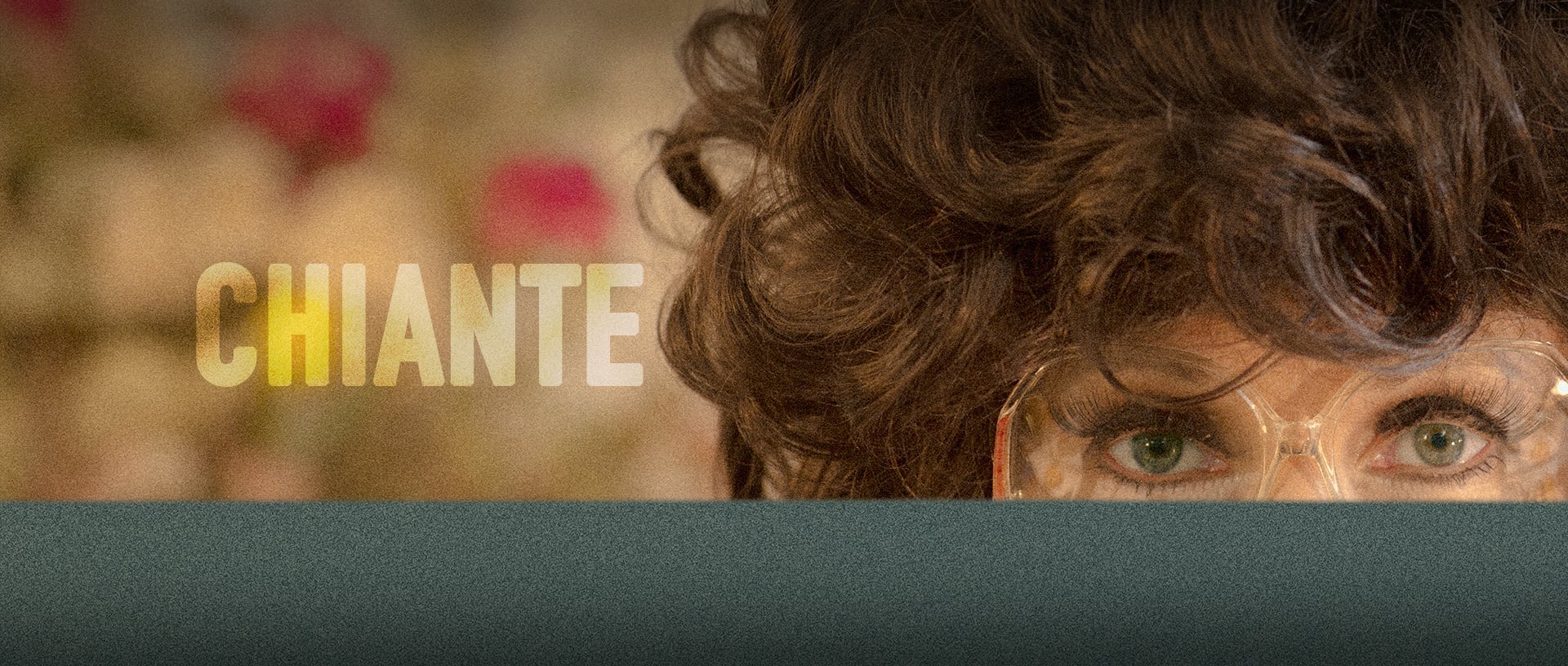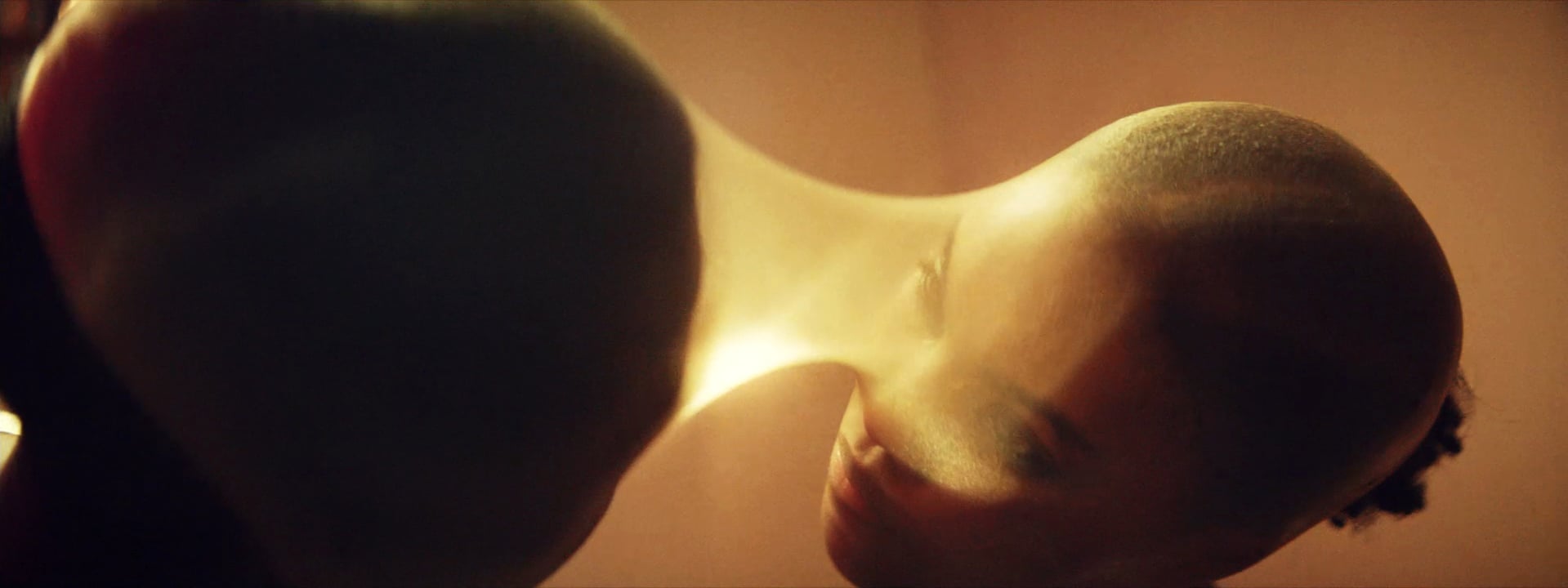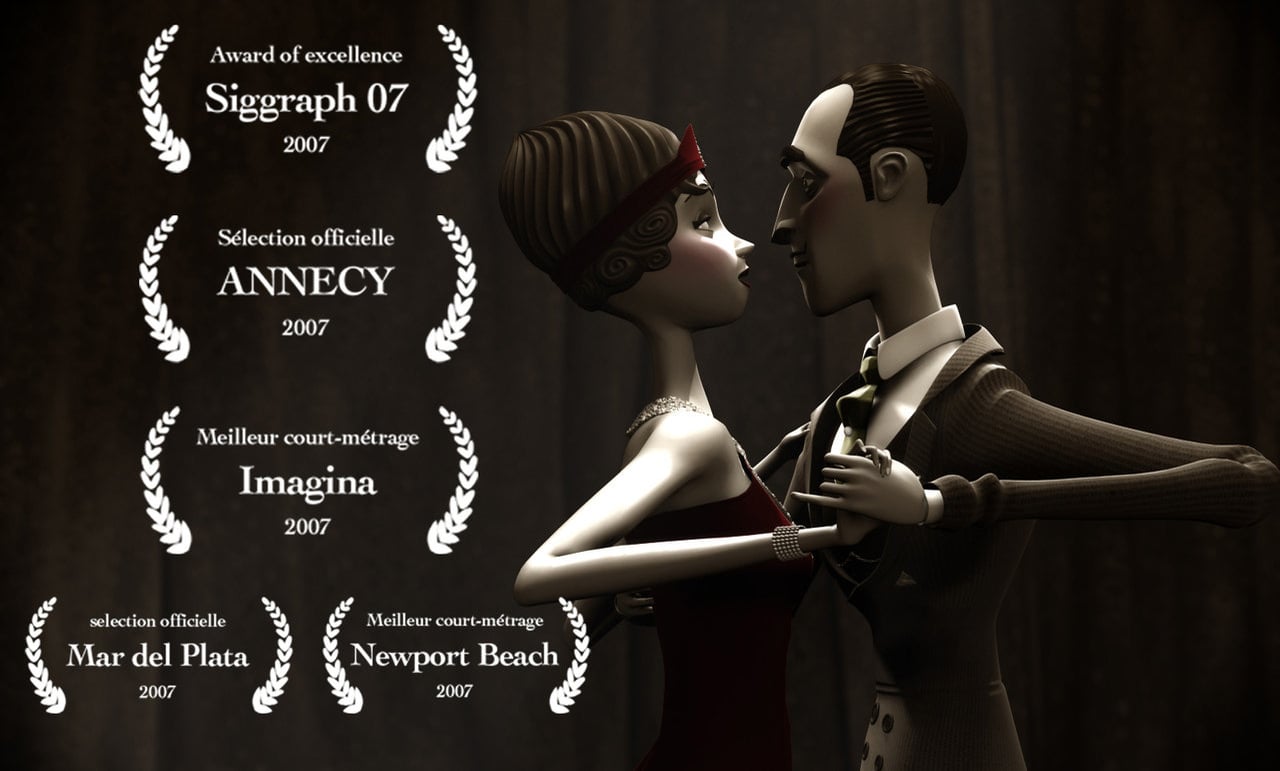What was it about Jack London’s 1908 short story, To Build A Fire, that inspired you to make your short film?
I have always been inspired by raw stories, the ones about elementary needs or emotions. To Build a Fire is an extremely simple story about a man that needs to build a fire for his survival but in the harsh winter of the Yukon every detail matters. I read this story as a teenager, when I was a boyscout, and back then I felt its cinematic potential and it never left me, until I decided to finally make it into a wordless polar western.
What was your process for deciding on the animation style which is quite different from your more commercial work?
I don’t really know if I have a “style”, or at least I am not trying to sign all of my work with a similar approach. To Build a Fire was made with a lot of attention to the three characters, the man, the dog and nature. I wanted the man to look very simple, almost fragile in such a detailed environment. With a limited colour palette dictated by the location (Yukon in winter) I wanted to create a nature that looked cold and unforgiving yet simple and beautiful. I worked with a young and talented art director, Tristan Menard who created the look for the film. Also the format was key and cinemascope was not wide enough, so I made up an even wider format 2.9:1. I wanted nature to be overwhelming an the character to be lost in it!
How did you research and decide on the character’s movements?
I researched the trappers, their equipment and how they were dressed. Then I went with the French co-producer Sam Francois-Steininger on a trip to the Alps in the middle of winter, where we shot a lot of references in conditions, walking in thick snow, trying to build a fire without gloves etc… These were essential to capture important details.
There’s a gripping tension throughout the film willing him to survive. How did you make your directing decisions – for instance, did the film unfold as you worked on it or was everything scripted thoroughly beforehand?
I like to start storyboarding knowing exactly where I want to go. Funnily enough I had a look at the storyboard the other day and it is exactly the film, except one close up that has been removed! I believe an audience can be sensitive to certain choices even though they are not conscious. For instance, the camera is shifting through the film, looking up at the man to start with and slowly but surely looking down on him in his slow fall. Those simple tricks allow to condition softly and force empathy in a way for somebody that felt strong to start with and then shows his vulnerability more and more.
What were the key lessons you learnt from making the film?
Planning and working with the best people is the only way to make a film! I am super proud and lucky that I got to work with super talented people, with the help of Nexus Studios and a great French co-producer. I also realise on every project that naivety is also a gift! Being in denial of how hard it will be every time you make a film is the only reason why films can be made! Otherwise we would simply not even start! So I try not to forget to forget!
Did the film take over your life – did you dream about it at night?
Hahaha! Yes, also because part of the crew didn’t live in London and stayed over at my home for 8 weeks! It became a sort of holiday camp and we were cooking, living and working together! But I love the process of making a film, I love making the decisions, finding the way and time always helps to refine and adjust carefully!
What were the most challenging aspects of the production and how did you resolve them?
Finishing! Keeping the flow going! A short film is never easy to make, I benefited from a chain of good will from the studio to most artists, partnering with the Arts University of Bournemouth and if the credits are huge it’s because it took that many people giving their time from 1 day to three months to make the film happen!
Anything else you’d like to share?
I have been really lucky that the composer Mathieu Alvado created a beautiful soundtrack and made his best to get us the best orchestra ever to record a soundtrack, The London Symphony Orchestra. They had never recorded music for a short film before and together with the producers, Mathieu made that happen and helped the film rise in intensity!
See more work:
